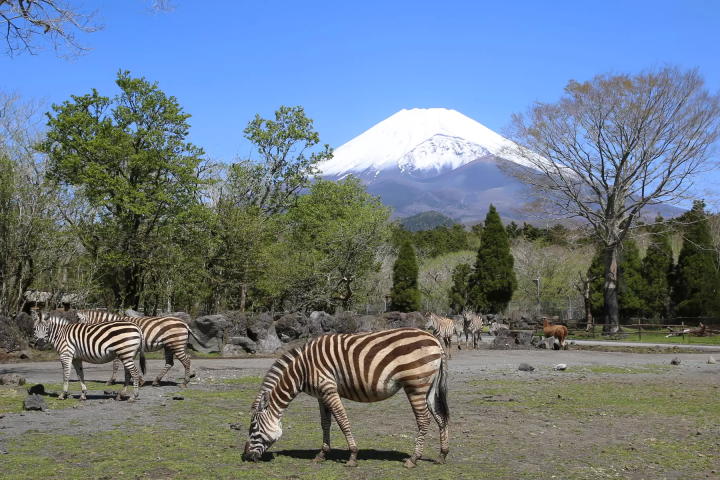Oshizushi (Pressed Sushi): Regional Types and How to Enjoy

Besides hand shaped nigiri sushi, there are many other types of sushi out there. For example, oshizushi, where different toppings are layered on vinegared rice in a special mold and pressed together. Let's learn more about the types of oshizushi!
Japan's Many Types of Sushi
The image most people have of sushi refers mainly to nigiri sushi - that is, a piece of raw fish sitting atop a hand-shaped clump of vinegared rice. However, there are many different kinds of sushi out there, such as Inari sushi, and rolled sushi too.
Another popular variety is oshizushi or 'pressed sushi', which is made from layers of different toppings and sushi rice that are placed in a mold and compressed together by weight, making them into a tightly pack sushi stack.
In this article, we'll take a look at some of the popular types of oshizushi that may not be very well known outside of Japan.
Regional Oshizushi All Across Japan
Just by the way in which its ingredients are layered, oshizushi can become a very beautiful dish by itself. Now let's take a look at some of the representative regional oshizushi types found around Japan.
1. Iwakuni Zushi (Yamaguchi Prefecture)

Iwakuni sushi from Yamaguchi prefecture, is, as you can see in the photo, a very large type of oshizushi. Layers of lotus root, denbu (mashed and seasoned fish), fish and shrimp seasoned with vinegar, egg, and other ingredients are stacked with thick layers of sweet vinegar sushi rice in a mold and pressed.
The stacking and arranging process is repeated over and over again until an oshizushi like in the picture is completed! It looks like a cake almost, and is considered to be a very luxurious type of sushi, thanks to the number of ingredients involved in its production. It is said that preserved foods such as this originated at the mountain castle, Iwakuni Castle.
2. Battera (Osaka Prefecture)

Battera are a type of pressed sushi made with mackerel originally from Osaka. It's made by stacking vinegar-pickled mackerel with finely sliced layers of mackerel and konbu; these layers are so thin that they can be practically seen through. The name 'battera' comes from the Portuguese word 'bateira', which means small boat.
This sushi was originally made with konoshiro gizzard shad and looked very similar to a small ship on its side, which gave it the name battera. Once the fish used was changed to mackerel, the present shape of the sushi came about instead.
3. Omura Sushi (Nagasaki Prefecture)

Coming from Shimabara in Nagasaki prefecture, Omura sushi are known for their layers of scrambled eggs. In Japan, these thin slices of scrambled eggs are referred to as kinshitamago.
The standard ingredients are minced sea bream or other white fish, hanpen, kanpyo(*1) for flavor, and layers of vinegared rice in betweeen.
*1 Kanpyo: strips of dried gourd, a common ingredient in sushi.
4. Gozaemon Sushi (Tottori Prefecture)

Gozaemon sushi from Tottori prefecture features vinegar pickled mackerel lightly cooked and layered with vinegared rice, wrapped in a layer of konbu from Hokkaido.
Gozaemon sushi is somewhat different in that it is technically a 'stick sushi' as the rice is spread out and topped, then pressed together, rather than layered like a cake.
5. Masu Sushi (Toyama Prefecture)

Masu sushi or trout sushi, is a regional cuisine from Toyama prefecture. The brightly colored sakura masu (masu salmon) is flavored with salt and vinegar, layered on sushi rice, and wrapped in bamboo leaves before being eaten in wedges like a pizza or cake.
6. Kakuzushi (Hiroshima Prefecture)

Kakuzushi is a popular regional dish in Hiroshima prefecture. This is a firmly packed sushi filled with a variety of colorful ingredients which include vinegar pickled mackerel, boiled shiitake mushrooms, thin strips of scrambled egg, boiled asari shell clams, and others. While it is commonly used in celebrations or as a meal for larger groups, it's also become a popular lunch box menu item in the region as well.
Pressed sushi is also a common feature in regional ekiben too, so when traveling around Japan, why not enjoy these local delicacies as you visit new prefectures?
日本への訪日外国人の方が、もっと増えますように!



































![[Reopening in March 2026] Ikoma Sanjo Amusement Park Park, 45 minutes from Osaka , with free admission](https://resources.matcha-jp.com/resize/720x2000/2024/08/28-194409.webp)
![[Gunma] 5 recommended gourmet foods at Kawaba Denen Plaza Roadside Station!](https://resources.matcha-jp.com/resize/720x2000/2025/02/26-225970.webp)
![[Kanazawa] Enjoy the world of gold leaf to the fullest in the city with the highest production volume in Japan](https://resources.matcha-jp.com/resize/720x2000/2025/11/12-249564.webp)
![[2026] Family Winter Trip to Suzuka Circuit! – For Both Day trips and Overnight Stays!](https://resources.matcha-jp.com/resize/720x2000/2025/12/26-254097.webp)
